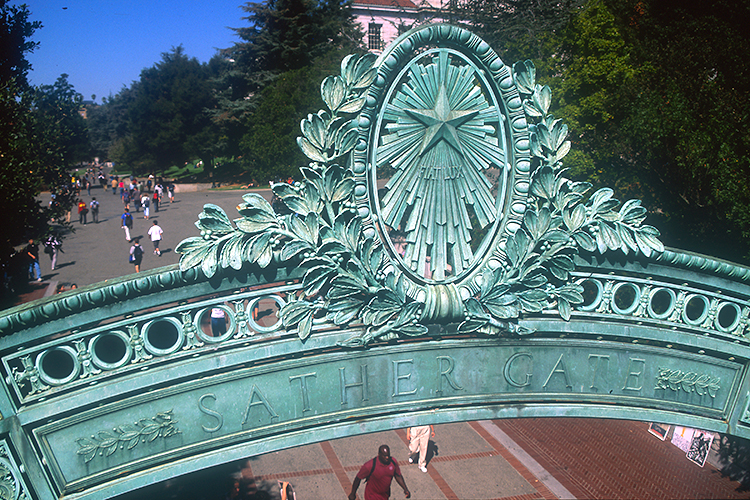Social gatherings produce increase in student COVID-19 cases

July 8, 2020
UC Berkeley University Health Services Medical Director Anna Harte and Assistant Vice Chancellor Guy Nicolette sent the following message to the campus community Wednesday:
Over the last week or so we have seen a notable increase in UC Berkeley students testing positive for COVID-19. It is concerning.
We have seen the number of University Health Services positive cases increase from a running total of 23 since the start of the pandemic, to 47 new cases in just one week. The majority of these new cases stem from a series of recent parties connected to the CalGreek system, which included students both within the CalGreek community and others, and led to some secondary spread within households and within other smaller gatherings. Generally, these infections are directly related to social events where students have not followed basic safety measures such as physical distancing, wearing face coverings, limiting event size, and gathering outside.
Following standard protocols, Berkeley Public Health and University Health Services have been involved with contact tracing, reaching those individuals who had close contact with the students who tested positive, advising regarding quarantine requirements, and encouraging and arranging testing.
Meanwhile, campus recovery teams are working hard to plan for the Fall semester, including plans to return more students, staff and faculty to campus. However, at the rate we are seeing increases in cases, it’s becoming harder to imagine bringing our campus community back in the way we are envisioning.
The increase in cases across the country and locally are a powerful reminder of how contagious this disease is and how quickly the disease can spread. You can be asymptomatic and still transmit the infection to others. Continuing to protect ourselves and others by following all public health guidelines is critical.
Do not attend large gatherings or parties
- Avoid events with crowds or large groups of people.
- Do not visit crowded places.
- Do not socialize indoors with anyone outside of your household.
- If you want to have a small gathering, keep it to 12 or fewer people within your “social bubble” (the same, non-changing group of people), hold it outside, stay 6 feet apart, and wear facial coverings.
Keep a safe physical distance
- Maintain at least 6 feet of distance from others outside your household whenever possible.
- Avoid contact with people who are sick.
Wear face coverings
- Wear face coverings anytime you are out in public.
- Wear face coverings when around others that are not in your immediate household.
- Wear a face covering in public settings and when physical distancing is not possible.
- Avoid touching your face covering other than to remove and clean it.
Be attuned to your own health
- Check your temperature daily.
- Be aware of the symptoms of COVID-19 and go in for testing if you have any symptoms.
- If you have a fever or any other symptoms of COVID-19, avoid contact with other people.
Fall semester planning
If we can keep our COVID-19 case numbers low, we can continue to move forward with our fall semester plans.
The fall semester will look and be very different. Everyone — students, faculty and staff — will be wearing a mask unless they are completely alone in their room or office. There will be distancing measures in every conceivable area across campus.
We are developing a testing strategy for those living, working or studying on campus. This testing will be combined with contact tracing to try to identify outbreaks early.
We are discussing how to develop social cohort structures — small “bubbles” of 10-12 students living on campus. The intention is to increase social interaction while keeping overall exposure dramatically reduced. We are maximizing environmental controls, like designating stairwells as up or down only, restricting class sizes and eliminating or changing high touch areas to the extent possible.
Testing
Testing is a useful tool in detecting cases and informing the campus and community of current prevalence however it has several very important limitations:
- There is no utility to re-testing (“test of cure”) if you are already positive: The release from isolation is determined by the public health department based on timeline and symptoms, a negative would not change anything, and another positive result does not necessarily mean you are still infectious.
- While we strive to test those who are contacts of confirmed cases, it is useless to do so too early (< 4 days after exposure) and a negative test does not release you from the 14 day quarantine required by public health since you can become infectious later.
For UC Berkeley students with symptoms or who have had contact with someone who tested positive, testing is available at UHS, regardless of insurance. Please see the UHS testing page for more information about this and other options, and as always, students are advised to call the UHS Advice Line at 510-643-7197 for medical advice 24/7.
UC Berkeley employees with mild symptoms can call the Occupational Health COVID-19 hotline 510-332-7192 for assessment and instructions. There are also local options for testing.
The campus is committed to doing all we can to minimize infections and outbreaks of COVID-19 on campus while continuing to further our mission. The success of this depends on all of us doing our part to keep ourselves and our campus community safe and healthy.